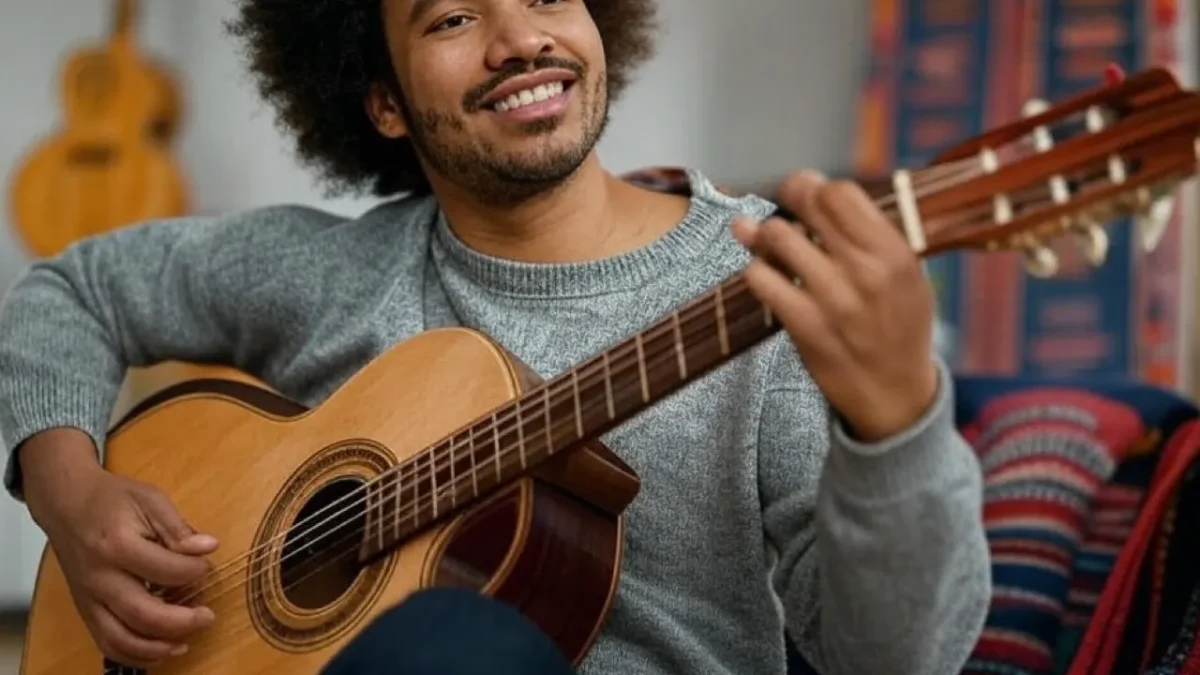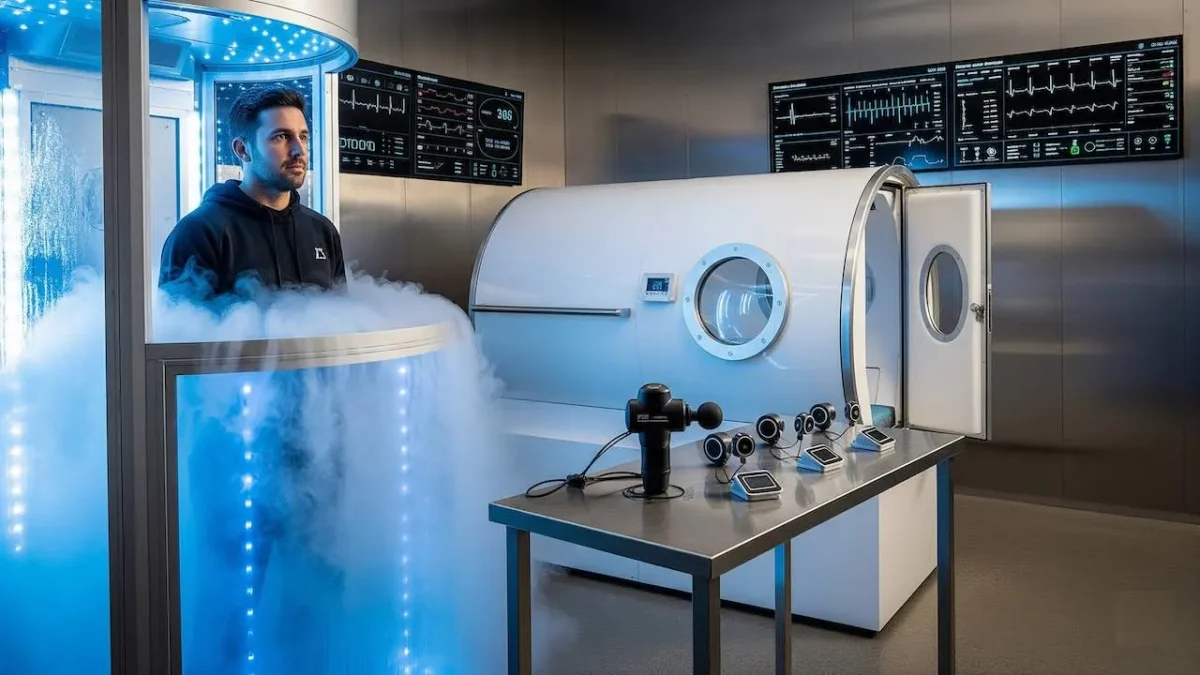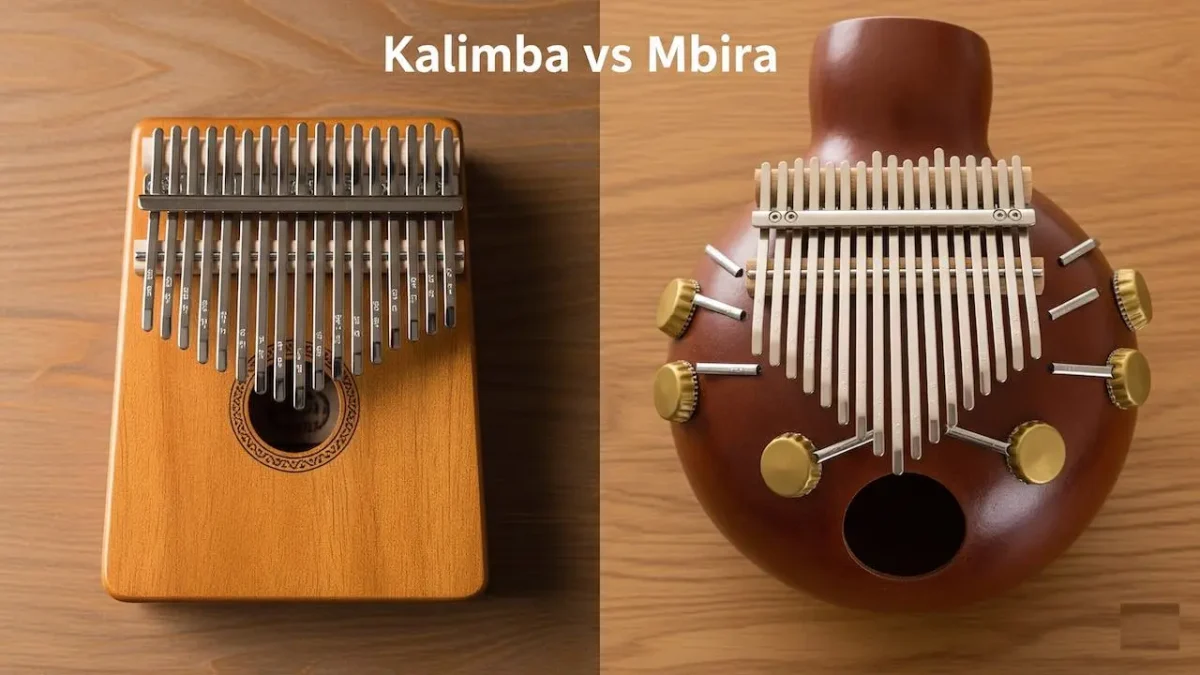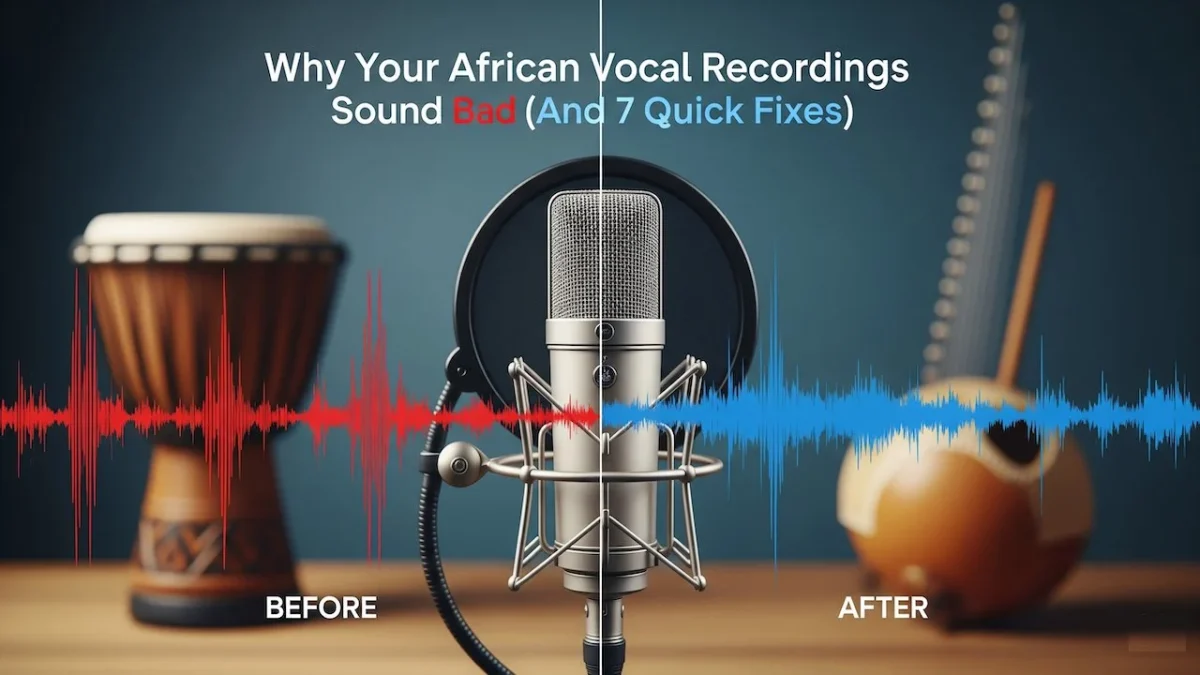
Afra Music Improvisation: Tips for Beginners to Shine
How Can Beginners Start Improvising Afra Music?
Afra music, with its rich heritage and distinctive rhythmic patterns, has captivated audiences worldwide. For beginners eager to explore this musical tradition, learning to improvise can seem challenging yet rewarding. This guide provides practical tips and techniques to help you develop your Afra music improvisation skills, drawing inspiration from recent festival performances in 2025.
Afra music originates from the Persian Gulf region, particularly from countries like Bahrain, Kuwait, UAE, and parts of Iran. Its distinctive percussive elements and melodic structures create a unique sound that has influenced many contemporary music genres. The rhythmic foundation of Afra music relies heavily on traditional drums like the tabl bahri and manjur, while melodic instruments such as the oud and qanun add harmonic complexity.
Whether you’re a percussionist, string player, or vocalist, mastering Afra improvisation opens up new creative possibilities. This guide breaks down key techniques, rhythmic patterns, and melodic approaches to help you start your journey into this fascinating musical tradition.
What Makes Afra Music Unique?
What Are the Core Elements of Afra Music?
Afra music stands out due to its distinctive elements that set it apart from other musical traditions:
- Polyrhythmic patterns: Afra music typically features complex layered rhythms
- Modal frameworks: Uses specific scales and modes different from Western music
- Call-and-response structures: Common in both instrumental and vocal pieces
- Improvisational freedom: Performers add personal expressions while respecting traditional frameworks
The rhythmic foundation of Afra music creates its signature sound. Unlike Western 4/4 time signatures, Afra music often employs complex time signatures like 6/8, 12/8, or combinations that create asymmetrical patterns. These rhythms typically emphasize offbeats, creating a distinctive groove that invites movement.
How Has Afra Music Evolved in Modern Times?
Afra music has undergone significant transformation while maintaining its core identity:
| Era | Characteristics | Influential Artists | Key Innovations |
|---|---|---|---|
| Traditional (Pre-1970s) | Pure acoustic sounds, strict adherence to traditional patterns | Mohamed Bin Faris, Abdulla Alsaffar | Established core rhythmic patterns |
| Early Modern (1970s-1990s) | Introduction of modern instruments, fusion with regional styles | Ali Bahar, Khalid Al Sheikh | Electric instruments, expanded harmonies |
| Contemporary (2000s-Present) | Digital production, global fusion, festival presence | Majaz, Boom.Diwan, Hamad Al-Qattan | Electronic elements, cross-cultural collaborations |
| Current (2023-2025) | AI-assisted composition, virtual collaboration, environmental themes | Layla Kardan, Narcy, 47Soul | Immersive performances, sustainability focus |
The evolution shows how Afra music has adapted while preserving its essential character. Recent festival performances from 2025 demonstrate a blend of traditional techniques with modern production approaches, creating a bridge between heritage and innovation.
How Can Beginners Learn Afra Rhythmic Patterns?
What Are the Basic Rhythmic Patterns in Afra Music?
Learning to improvise in Afra music starts with mastering fundamental rhythmic patterns:
The basic Afra pattern follows a 6/8 time signature with emphasis on specific beats. Here’s a simplified breakdown:
| Count | 1 | & | 2 | & | 3 | & |
|---|---|---|---|---|---|---|
| Sound | D | . | T | . | D | T |
| Emphasis | Strong | Medium | Strong | Medium |
In this notation:
- D represents a strong “dum” sound (bass tone)
- T represents a lighter “tak” sound (high tone)
- Dots represent rests
Beginners should practice this pattern slowly, gradually increasing speed while maintaining clarity. Use a metronome set to 60-80 BPM initially.
How Can You Practice Basic Afra Rhythms?
Developing rhythmic competence requires regular practice:
- Start with hand clapping: Before using instruments, clap the patterns to internalize them
- Use syllable vocalization: Say “dum” and “tak” while playing to connect mind and hands
- Practice with recordings: Play along with authentic Afra music recordings
- Gradual tempo increase: Master patterns slowly before increasing speed
- Record your practice: Review recordings to identify areas for improvement
A popular practice method observed at 2025 festivals involves rhythm circles, where musicians sit together and practice patterns collectively, each joining one by one until creating a complete rhythmic tapestry.
What Instruments Are Used in Afra Music Improvisation?
Which Traditional Instruments Form the Core of Afra Music?
Afra music employs several distinctive instruments:
| Instrument | Category | Role in Afra | Difficulty Level |
|---|---|---|---|
| Tabl Bahri | Percussion | Main rhythmic foundation | Beginner to Intermediate |
| Manjur | Percussion | Adds rhythmic texture | Beginner |
| Oud | String | Melodic improvisation, accompaniment | Intermediate to Advanced |
| Qanun | String | Complex melodic lines | Advanced |
| Nay | Wind | Melodic phrases, atmospheric elements | Intermediate |
| Jalhama | Percussion | Accent beats, transitions | Beginner |
| Voice | Vocal | Carries melody, often improvisational | All levels |
Beginners often start with simpler percussion instruments like the manjur or jalhama before advancing to more complex instruments. The tabl bahri (sea drum) stands as the cornerstone instrument for Afra rhythm.
How Can You Choose the Right Instrument to Start With?
Selecting your first Afra instrument depends on several factors:
- Personal interest: Choose an instrument that genuinely excites you
- Physical comfort: Consider how the instrument feels when you hold it
- Availability: Some traditional instruments may be harder to find
- Learning resources: Ensure teaching materials are available for your chosen instrument
- Musical background: Previous musical experience might guide your choice
Based on observations from 2025 festival workshops, many beginners find success starting with frame drums or the manjur due to their accessibility and fundamental role in Afra rhythms.
How to Master Afra Melodic Improvisation?
What Scales and Modes Are Used in Afra Music?
Afra melodic improvisation relies on specific scales and modes:
The most common scales include:
- Maqam Bayati: Features a distinctive half-flat second degree
- Maqam Rast: The foundation of many Afra melodies
- Maqam Hijaz: Known for its augmented second interval
- Maqam Saba: Creates a melancholic mood
Practice these scales ascending and descending until they become second nature. Notice how different scales evoke distinct emotional qualities. At recent 2025 festivals, performers demonstrated how these scales connect to specific emotional states and storytelling elements.
How Do You Build Melodic Phrases in Afra Style?
Creating authentic Afra melodic phrases involves several techniques:
- Start with short motifs: Begin with 3-4 note patterns
- Use ornamentation selectively: Add trills and grace notes to enhance expression
- Respect the quarter-tone system: Practice microtonal inflections central to Afra
- Study phrase endings: Authentic cadences give melodies legitimacy
- Balance repetition and variation: Repeat motifs with subtle changes
A technique highlighted at 2025 festival masterclasses involves shadow practicing – playing along with recorded masters while mimicking their phrasing and ornamentations, gradually developing your own voice.
What Role Does Call-and-Response Play in Afra Improvisation?
How Can Beginners Practice Call-and-Response?
Call-and-response forms a cornerstone of Afra improvisation:
- Listen to examples: Study recordings featuring call-and-response sections
- Practice with a partner: Take turns creating calls and responses
- Start simple: Begin with short, clear phrases before attempting complexity
- Record yourself: Create your own calls, then improvise responses
- Analyze phrase length: Traditional responses typically match the call’s duration
Contemporary Afra performers at 2025 festivals demonstrated innovative call-and-response techniques, including digital looping to create virtual ensembles and cross-cultural collaborations that brought new vocabulary to this traditional technique.
What Makes an Effective Call or Response?
Creating engaging call-and-response exchanges requires attention to several elements:
| Element | Call Characteristics | Response Characteristics |
|---|---|---|
| Length | Usually 1-2 measures | Matches or complements call length |
| Complexity | Sets the technical level | Maintains or slightly varies complexity |
| Rhythm | Establishes the groove | Acknowledges and builds on the rhythm |
| Melody | Presents the theme | Develops or answers the theme |
| Dynamics | Sets the emotional tone | Responds to or contrasts the emotion |
Effective exchanges build musical tension and release, creating a conversation between performers. This technique appears prominently in 2025 festival performances, where artists used call-and-response to bridge traditional and contemporary expressions.
How to Incorporate Traditional Afra Patterns into Modern Contexts?
What Fusion Approaches Work with Afra Music?
Blending Afra with contemporary styles creates exciting possibilities:
- Afra-Electronic fusion: Combining traditional patterns with electronic beats
- Afra-Jazz integration: Incorporating jazz harmonies with Afra rhythms
- Global percussion blending: Mixing Afra with other world percussion traditions
- Pop-Afra crossover: Adding Afra elements to accessible pop structures
- Classical-Afra composition: Bringing Afra techniques into orchestral settings
Recent 2025 festival performances showcased innovative approaches, including collaborations between Afra masters and electronic producers, creating immersive soundscapes that honored tradition while embracing technology.
How Can You Maintain Authenticity While Innovating?
Balancing innovation with respect for tradition requires thoughtful approaches:
- Study with traditional masters: Understand rules before breaking them
- Progressive experimentation: Introduce new elements gradually
- Contextual awareness: Consider cultural significance of patterns
- Collaborative development: Work with diverse musicians for perspective
- Audience feedback: Gauge responses to innovations
The most successful Afra fusion artists featured at 2025 festivals demonstrated deep knowledge of traditional forms before introducing innovations, earning respect from both traditionalists and contemporary audiences.
How Important is Cultural Context in Afra Improvisation?
What Historical Knowledge Enhances Afra Improvisation?
Understanding Afra’s cultural roots deepens your musical expression:
- Maritime connections: Afra’s relationship to seafaring traditions
- Ceremonial functions: Traditional contexts for performance
- Regional variations: How Afra differs across Persian Gulf communities
- Migration patterns: How cultural exchange shaped the music
- Lyrical themes: Traditional subject matter in vocal Afra
Historical knowledge provides authentic context for your improvisations. Many 2025 festival workshops included cultural history sessions alongside technical training, recognizing that cultural understanding enhances musical authenticity.
How Do Regional Differences Affect Afra Styles?
Afra varies significantly across regions:
| Region | Rhythmic Characteristics | Melodic Tendencies | Notable Instruments |
|---|---|---|---|
| Bahraini Afra | Complex polyrhythms, faster tempos | Emphasis on quarter tones | Tabl bahri, manjur |
| Kuwaiti Afra | Steady, driving rhythms | Extended melodic passages | Tanbura, surnay |
| UAE Afra | Syncopated patterns, distinctive accents | Modal exploration | Oud prominence, manjur |
| Iranian Coastal Afra | Intricate ornamentation, rubato sections | Microtonality | Nay, setar |
Understanding these regional differences allows for more nuanced improvisation. Contemporary performers at 2025 festivals often acknowledged their specific regional influences while embracing cross-regional collaboration.
How to Develop Your Personal Voice in Afra Improvisation?
What Makes Your Improvisation Style Unique?
Developing a personal voice requires conscious development:
- Identify your influences: Recognize which masters inspire you
- Analyze your tendencies: Notice your natural rhythmic and melodic preferences
- Purposeful practice: Work on expanding your vocabulary
- Record and reflect: Review your improvisations critically
- Seek feedback: Share your playing with knowledgeable listeners
The most captivating performers at 2025 festivals displayed distinctive voices while respecting tradition, often tracing their development through years of deliberate practice and mentorship.
How Can You Overcome Common Beginner Challenges?
New improvisers face several typical obstacles:
| Challenge | Cause | Solution | Practice Technique |
|---|---|---|---|
| Rhythmic instability | Insufficient internalization | Daily rhythm practice | Metronome work at varying tempos |
| Limited melodic vocabulary | Lack of pattern study | Transcribe master solos | Pattern cards for daily practice |
| Ornamentation difficulties | Technical limitations | Slow practice of ornaments | Gradual speed building |
| Performance anxiety | Inadequate preparation | Progressive exposure | Recording self-practice |
| Cultural disconnection | Limited contextual knowledge | Cultural immersion | Study cultural background |
Workshop leaders at 2025 festivals emphasized that these challenges are universal and can be overcome with patient, systematic practice. Many successful performers shared stories of their own learning struggles and breakthroughs.
What Role Does Listening Play in Developing Improvisation Skills?
How Should Beginners Approach Analytical Listening?
Developing critical listening skills accelerates progress:
- Active vs. passive listening: Engage analytically rather than casually
- Focus on specific elements: Listen for particular instruments or techniques
- Transcribe passages: Write down or record yourself playing what you hear
- Compare interpretations: Study how different artists approach similar material
- Historical progression: Trace how styles evolved over time
Festival workshops in 2025 often included guided listening sessions where experts highlighted specific techniques and approaches, training participants’ ears to recognize subtle differences in style and execution.
What Recording Resources Should Beginners Study?
Essential listening for aspiring Afra improvisers:
- Historical recordings: Documents of traditional masters
- Regional collections: Examples from different Persian Gulf areas
- Festival performances: Live recordings showing contemporary applications
- Educational materials: Recordings with accompanying explanations
- Cross-cultural collaborations: Examples of Afra fusion projects
Digital archives featuring 2025 festival performances now provide valuable learning resources, offering high-quality recordings of both traditional masters and innovative contemporary artists.
How to Prepare for Afra Music Performance?
What Practice Routines Build Performance Readiness?
Effective practice leads to confident performance:
- Daily technical exercises: 15-20 minutes on fundamental patterns
- Rhythmic independence drills: Develop ability to maintain patterns while adding variations
- Repertoire development: Learn traditional pieces as frameworks for improvisation
- Recorded practice sessions: Review and analyze your playing
- Mock performances: Simulate performance conditions during practice
Successful performers at 2025 festivals emphasized consistent practice routines, often incorporating technologies like loop pedals and recording software to enhance their practice efficiency.
How Can Technology Aid Your Afra Practice?
Modern tools enhance traditional learning methods:
- Rhythm apps: Digital metronomes with programmable Afra patterns
- Recording software: Multi-track recording for self-accompaniment
- Slow-down tools: Applications that reduce tempo without changing pitch
- Virtual collaboration platforms: Remote practice with other musicians
- AI practice assistants: Smart applications that provide feedback on rhythmic accuracy
The 2025 festival scene showcased how technology can support tradition, with many masters embracing digital tools while maintaining authentic technique and expression.
What Performance Opportunities Exist for Afra Musicians?
Where Can Beginners Perform Afra Music?
Finding performance opportunities builds confidence and skill:
- Community gatherings: Cultural events and celebrations
- Student showcases: Educational settings for emerging players
- Open mic nights: Venues with world music focus
- Collaborative projects: Cross-cultural music initiatives
- Digital platforms: Online showcases and virtual festivals
The 2025 festival circuit demonstrated increased opportunities for emerging artists, with many events featuring dedicated showcase stages for new voices alongside established masters.
How Do Modern Festivals Showcase Afra Music?
Contemporary festival settings offer diverse platforms:
| Festival Type | Performance Format | Audience Engagement | Learning Opportunities |
|---|---|---|---|
| Traditional | Formal concert settings | Observational | Master classes |
| Contemporary | Interactive performances | Participatory | Workshops |
| Fusion | Collaborative showcases | Immersive experiences | Cross-genre sessions |
| Digital | Virtual reality concerts | Remote interaction | Online tutorials |
| Community | Intimate gatherings | Direct connection | Informal mentoring |
The 2025 festival landscape revealed growing interest in Afra music across diverse contexts, with opportunities ranging from traditional concert settings to immersive digital experiences.
How to Connect with the Afra Music Community?
Where Can You Find Afra Music Teachers and Mentors?
Finding guidance accelerates growth:
- Cultural centers: Community hubs for traditional arts
- Music conservatories: Institutions with world music programs
- Festival workshops: Educational components of performance events
- Online communities: Digital gathering places for enthusiasts
- Social media groups: Platforms where Afra musicians connect
The 2025 festival scene highlighted the importance of mentorship, with formal master-student relationships complemented by innovative teaching approaches including distant learning and cross-generational collaboration.
How Can Social Media Connect You with Other Afra Musicians?
Digital platforms facilitate community building:
- Specialized groups: Join Afra-focused online communities
- Video sharing: Post your practice and performances
- Virtual collaborations: Create music with distant partners
- Live streaming: Attend or host online workshops
- Resource sharing: Exchange learning materials with peers
The 2025 festival community demonstrated strong digital engagement, with many artists maintaining active online presences that complemented their in-person performances and teaching.
How Can You Document Your Afra Music Journey?
What Methods Help Track Your Progress?
Documenting your development provides motivation and insight:
- Practice journal: Record daily activities and insights
- Regular recordings: Create monthly documentation of your playing
- Technique inventory: Maintain a list of patterns you’ve mastered
- Feedback collection: Gather comments from teachers and peers
- Performance archive: Keep records of your public playing
Festival participants in 2025 often shared their documentation methods, revealing how systematic tracking accelerated their growth and helped overcome plateaus.
How Can Reflection Improve Your Improvisation?
Thoughtful reflection enhances learning:
| Reflection Practice | Benefits | Implementation Method |
|---|---|---|
| Performance analysis | Identifies strengths and weaknesses | Record and review with specific focus |
| Emotional awareness | Connects technique with expression | Journal about feelings during improvisation |
| Comparison tracking | Shows progress over time | Compare recordings from different periods |
| Mentor dialogue | Provides expert perspective | Regular review sessions with teachers |
| Peer feedback | Offers diverse viewpoints | Organized exchange with fellow students |
Workshop leaders at 2025 festivals emphasized reflective practice as essential for developing improvisational fluency, encouraging participants to integrate reflection into their regular practice routines.
What Resources Support Afra Music Learning?
What Books and Digital Materials Are Available?
Learning resources for Afra music students:
- Method books: Structured learning approaches
- Historical texts: Background on cultural context
- Pattern collections: Compilation of traditional motifs
- Video tutorials: Visual demonstration of techniques
- Interactive applications: Digital learning platforms
The 2025 festival marketplace showcased an expanding range of learning materials, including augmented reality applications that demonstrated proper technique and cultural context.
How Can You Build Your Own Afra Music Reference Library?
Creating personal learning resources enhances progress:
- Recorded pattern bank: Collection of rhythm and melodic patterns
- Transcription notebook: Written documentation of master performances
- Technical exercise compilation: Personalized practice routines
- Festival recordings archive: Documentation of live performances
- Collaboration journal: Notes from playing with others
Many 2025 festival artists shared their personal organization systems, revealing meticulous approaches to categorizing and accessing their accumulated knowledge.
What Is the Future of Afra Music Improvisation?
How Are Modern Innovators Expanding Afra Traditions?
Contemporary approaches pushing boundaries:
- Technological integration: Digital processing and production
- Cross-cultural collaboration: Blending with global traditions
- Extended techniques: New approaches to traditional instruments
- Conceptual frameworks: Themed improvisational structures
- Audience interaction: Participatory performance models
The cutting-edge performances at 2025 festivals demonstrated how tradition and innovation can coexist, with artists respecting core principles while exploring new expressive possibilities.
What Trends Are Emerging in 2025 Afra Performance?
Current developments shaping the art form:
| Trend | Description | Notable Practitioners |
|---|---|---|
| Eco-acoustics | Environmentally conscious performance | Layla Kardan, Majaz |
| Micro-festival movement | Intimate, community-based gatherings | Boom.Diwan, 47Soul |
| Virtual collaboration | Remote creation and performance | Alaa Wardi, Narcy |
| Immersive experiences | Multi-sensory Afra presentations | Kayanite, Hamad Al-Qattan |
| Heritage preservation | Documentation and archiving projects | Bahrain Music Archive, Pearl Diving Music Project |
These trends point toward a vibrant future where Afra music continues to evolve while maintaining connections to its rich heritage and cultural roots.
How Can Beginners Contribute to Afra Music Preservation?
Why Is Cultural Preservation Important for New Musicians?
Sustaining tradition benefits everyone:
- Cultural continuity: Maintaining connections across generations
- Artistic integrity: Understanding roots enhances creativity
- Community building: Shared heritage creates belonging
- Knowledge transmission: Each generation adds to collective wisdom
- Identity affirmation: Cultural expression strengthens personal connection
Festival discussions in 2025 emphasized the role of beginners in cultural preservation, highlighting how new practitioners bring fresh energy and perspectives to traditional forms.
What Simple Steps Support Afra Music’s Future?
Everyone can contribute to sustainability:
- Documentation: Record elders and masters
- Learning commitment: Study traditional forms thoroughly
- Teaching outreach: Share knowledge with younger generations
- Public advocacy: Promote awareness of Afra’s cultural value
- Ethical innovation: Develop new approaches that honor tradition
The 2025 festival community demonstrated collective commitment to ensuring Afra music thrives, with initiatives ranging from academic documentation to community education programs aimed at younger generations.
Final Thoughts: Your Journey into Afra Improvisation
Becoming an Afra improviser offers rich rewards beyond technical mastery. This musical tradition connects you to centuries of cultural expression while providing a framework for personal creativity. By embracing both traditional foundations and thoughtful innovation, you contribute to a living art form.
The vibrant Afra music scene showcased at 2025 festivals reveals a tradition in dynamic evolution, balancing heritage preservation with contemporary relevance. As you develop your skills, remember that authentic improvisation emerges from both technical competence and cultural understanding.
Begin with the basic patterns outlined in this guide, seek knowledgeable mentors, listen critically to master performers, and practice regularly with focused intention. Most importantly, approach your learning with respect for the cultural context while bringing your unique voice to this rich tradition.
What questions do you have as you begin your Afra music journey? Which aspects of this fascinating tradition most inspire you to explore further? The path of musical discovery awaits – your first improvisational steps begin now.



